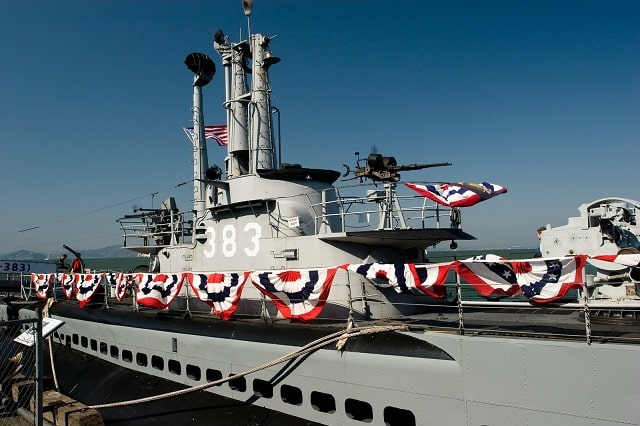The Unique Identifier (UID) global asset tracking program developed by the U.S. military has transformed the management of relevant equipment, inventory, and parts. The U.S. government maintains a centralized database for the UID program that includes all military assets that meet certain requirements. Any assets supplied to the military that meet the requirements must be fitted with an appropriate Item Unique Identification (IUID) label or tag and added to the database.
The defense and aerospace industries are some of the most tightly regulated in the world. There is a high standard placed on traceability, security, and control due to the sensitive nature of the equipment and the potential impacts on public safety. In this post, we’ll review 6 best practices for UID global asset tracking. These recommendations can help defense suppliers and other businesses improve their own capabilities.

Business leaders that wish to implement a UID global asset tracking program for their companies should begin the project with a thorough review of military regulations. The U.S. Department of Defense (DoD) is responsible for some of the most important standards related to the UID program including MIL-STD-130. This document, titled “Identification Marking of U.S. Military Property,” specifies how equipment that is sold to the U.S. military should be marked. The information applies to all military branches and unifies the approach into a single program. This government document highlights several best practices that suppliers and other military partners can implement.
Other military regulations, such as MIL-DTL-150-24F, should also be consulted to understand more about the physical traits necessary for identifying markings that are placed on the equipment. This high level of standardization is a hallmark of military processes and can help any business improve its level of asset management oversight. Learning from these procedures can also help with other related department functions such as regulatory audit preparation and quality control.
Another important consideration for UID global asset tracking is the understanding of equipment and devices applications. Military assets are deployed to regions throughout the world and are used in many harsh environments. In addition, many assets may be used for multiple purposes or can be stored in warehouses and other locations for long periods of time until use. An asset tracking system will provide location data for each item and can also include a master asset hierarchy that categorizes property based on locations such as offices and warehouses.
Understanding these applications also allows you to define the performance requirements that will determine how you label each asset. For example, assets that are used outdoors are typically designed with greater durability to withstand harsh outdoor elements and extreme temperatures that may be encountered. Assets may also encounter sources of abrasion (such as sand in a desert) or other potential contaminants like chemicals and salt spray. Asset managers that utilize UID global tracking standards will use these application requirements to select a proper label design as we will discuss below.
A global UID asset tracking system should also utilize a central inventory management software program to coordinate all important activities. These platforms provide a reliable form of asset traceability with a defined chain of custody for each item. An inventory management program can also be integrated with other software tools to create a cohesive way to manage important business operations. Many vendors and defense industry suppliers use these platforms to optimize their inventory management, logistics, and supply chain processes across all departments. The software can also be aligned with official military systems to improve asset handoffs and streamline invoicing and order management.

Asset tracking is done through the management of important data including location information, maintenance histories, equipment operating conditions. This data can then be shared between employees as they conduct their work and can also be displayed directly on IUID asset labels. Another best practice that many defense suppliers utilize is to create a suitable UID label format or template based on their internal systems, UID program requirements, and specific needs for each asset. An IUID label format is defined by a construct 1 or 2 format, barcode format, and identifying text or graphics.
Selecting the material for an IUID label is a very critical step in the design process. The most common materials used for IUID labels are polyester, polycarbonate, and Metalphoto® anodized aluminum. Choosing between plastic or metal will depend upon the application requirements for the asset being tagged. It is important to choose a label that is as durable as the asset itself so that it can be used for the lifetime of the equipment.
Many applications that experience very harsh conditions, such as marine vessels and aircraft, utilize Metalphoto IUID labels which have an expected exterior lifetime of over 20 years. In fact, in tests conducted by the U.S. Navy, Metalphoto received the highest scores among IUID materials. The U.S. Department of Defense has specified Metalphoto photosensitive anodized aluminum for durable labels, nameplates, and other identification tags installed in harsh operating environments for more than 50 years.
Inventory management systems also present an incredible opportunity for companies to optimize and automate their business processes. Leading defense suppliers are using advanced automation technologies such as Artificial Intelligence (AI) and machine learning to create advanced supply chain capabilities. Additional technologies that can be used include automated barcode or RFID scanning, integrated military DoD forms, real-time inventory tracking, and automated inventory control.
The military UID program offers an excellent framework for global asset management. Defense suppliers and other related businesses can use these best practices to improve their own asset tracking capabilities and gain an edge over competitors. As technology continues to improve, we can expect even greater synergies between military systems and the asset tracking capabilities of leading suppliers.
Our sales engineers are experts in automatic asset tracking, tagging and identification,a nd can answer all your questions. Get in touch now.
Lets Talk ›